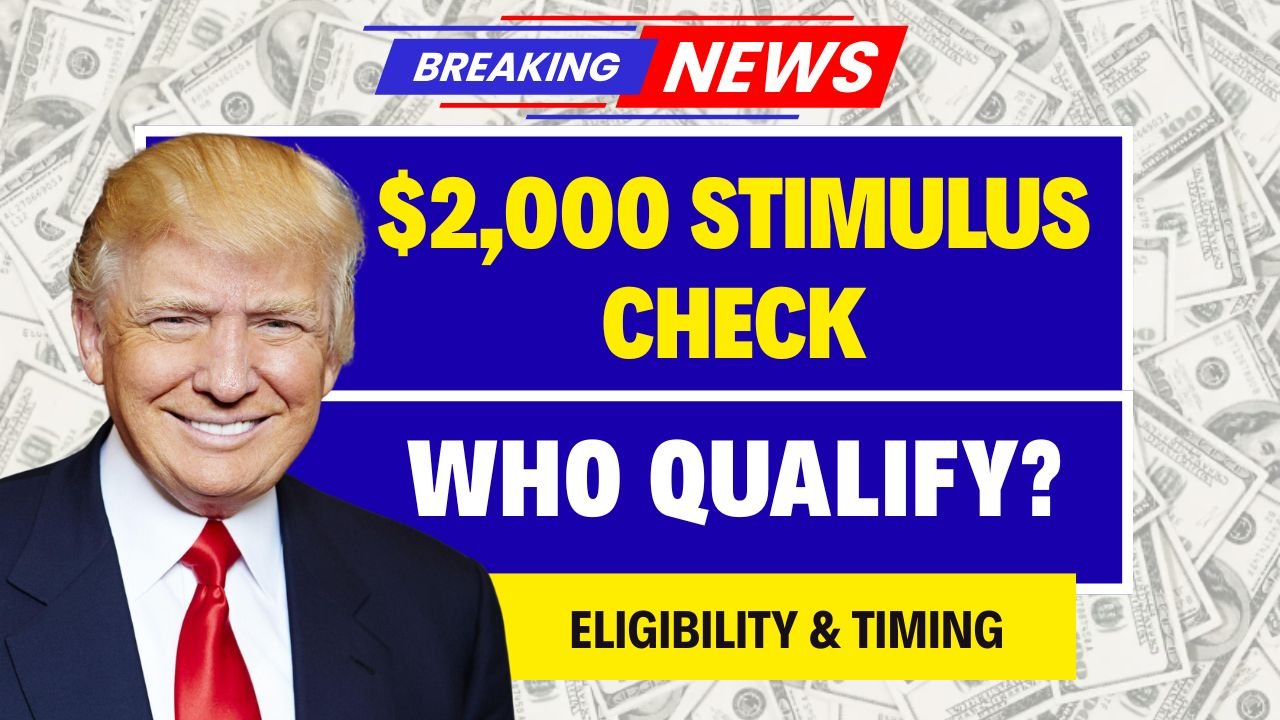In the aftermath of the COVID-19 pandemic, governments across the globe have been striving to revitalize their economies. In the United States, three rounds of stimulus checks were issued to provide immediate relief to struggling Americans. Now, attention has turned to a potential $2,000 Stimulus Check, a proposed fourth payment intended to further assist those burdened by rising costs of living. But the question remains: Is everyone getting this fourth stimulus check?
In this comprehensive guide, we’ll explore what the fourth stimulus check entails, its potential eligibility criteria, expected timelines, and whether all Americans can expect to receive it.
Fourth Stimulus Check: Proposal or Reality?
As of now, the $2,000 Stimulus Check is a proposal rather than an officially approved plan. Social media, public forums, and political circles are buzzing with discussions regarding this potential financial relief. Progressive lawmakers are pushing hard for it, citing high inflation, increasing unemployment, and growing income inequality as justifications.
The most notable push is coming from the “Monthly Stimulus Petition,” which calls for recurring payments of $2,000 until the economy fully recovers. This has garnered millions of signatures and continues to gain momentum among both the public and policymakers.
The Economic Landscape: Why a Fourth Stimulus?
Rising inflation has left millions of Americans struggling to make ends meet. From grocery bills to gas prices, housing to health care, everything has become significantly more expensive. For lower and middle-income families, the impact is devastating.
A one-time $2,000 Stimulus Check could offer significant relief, particularly for:
- Seniors
- Unemployed workers
- Families with children
- Single parents
- Individuals with disabilities
Possible Eligibility Criteria for the $2,000 Stimulus Check
Although the fourth stimulus has not been officially approved, based on past relief programs, those who may qualify could include:
- Low-income individuals earning less than $75,000 annually (or $150,000 for joint filers)
- Elderly citizens relying primarily on Social Security benefits
- Unemployed Americans impacted by layoffs or economic downturns
- Single parents managing household expenses alone
- People with disabilities receiving SSI or SSDI benefits
Eligibility could be determined using recent tax filings or benefits records, as it was in previous stimulus rounds.
When Could the Payment Arrive?
If passed into law, the $2,000 Stimulus Check would likely follow the same distribution method as earlier checks. The IRS would use existing data from 2019-2020 tax returns and Social Security records to distribute funds via:
- Direct deposit
- Paper checks
- Prepaid debit cards
However, since there is no formal approval yet, there is no concrete timeline for distribution.
Also Read – Maruti Suzuki Ertiga: A Budget-Friendly MPV with Premium Features for Indian Families
Were the Previous Stimulus Checks Enough?
The first three stimulus checks provided much-needed support at the height of the pandemic. However, as inflation continues to rise and many Americans face ongoing financial challenges, previous payments now seem insufficient.
Underserved groups such as undocumented workers, individuals without bank accounts, or those who missed filing returns, were left behind. This increases the urgency for a more inclusive and effective fourth round of payments.
Public and Political Demand
The demand for another round of relief is growing. Lawmakers like Senator Bernie Sanders, Representative Alexandria Ocasio-Cortez, and Senator Elizabeth Warren are at the forefront of advocating for the $2,000 Stimulus Check.
Their argument is straightforward: In a wealthy nation, no one should suffer due to a lack of basic resources. According to them, recurring payments can reduce poverty, boost spending, and stabilize communities.
While some are calling for one-time payments, others push for monthly distributions until the economy fully recovers.
Could This Strain the Economy?
Critics argue that issuing another stimulus payment, particularly a large one like the $2,000 Stimulus Check, could strain the national budget and increase the debt burden. However, many economists believe the opposite could happen.
When people receive financial aid, they tend to spend it quickly on essentials, which stimulates the economy and supports local businesses. Thus, instead of creating a burden, it may help sustain the economic cycle and prevent recession.
Who Would Benefit the Most from the $2,000 Stimulus Check?
If approved, this payment would significantly benefit:
- SSI/SSDI recipients, whose fixed incomes often fall short of covering basic living costs.
- Single mothers, who juggle childcare, education, and household bills.
- Small business owners, especially those still recovering from pandemic-related losses.
- Seniors, who face skyrocketing health care and prescription drug costs.
What to Do If the $2,000 Stimulus Check Is Approved
Here are a few things you should do to ensure you’re ready to receive the fourth stimulus payment if it gets approved:
- File your most recent tax return (2023 or 2024).
- Ensure your bank account information is updated with the IRS.
- Opt for direct deposit if possible—it’s the fastest way to receive your payment.
- Keep your SSA or VA records up to date if you’re a beneficiary.
The Bottom Line
While the $2,000 Stimulus Check has not been officially confirmed, the growing public demand and ongoing economic challenges make it a possibility. If passed, the check would likely target specific groups based on income and financial vulnerability.
It is crucial to remain informed and maintain your financial documents in order. By doing so, you can increase your chances of receiving the payment if and when it’s distributed.
FAQs
Q1. Is the U.S. government officially issuing a $2,000 fourth stimulus check?
A. No, there is no official confirmation yet. It remains a proposal supported by several lawmakers and petitions.
Q2. Who could be eligible if a fourth stimulus check is approved?
A. Likely candidates include low-to-middle-income earners, Social Security beneficiaries, veterans, and families meeting income thresholds.
Q3. Are any states providing their own $2,000 stimulus payments?
A. Yes, some states and local governments have implemented their own relief programs. Eligibility and payment amounts vary.
Q4. How can I check the status of my stimulus check or eligibility?
A. You can track federal payments through the IRS website. State-specific programs usually have dedicated portals.
Q5. Will retirees or Social Security beneficiaries get the $2,000 check?
A. If approved, many Social Security recipients may qualify depending on their total income and tax filing status.
Final Thoughts
The proposal for a $2,000 Stimulus Check brings renewed hope to millions facing financial hardship in 2025. While there’s still uncertainty surrounding its approval, staying prepared and informed can ensure you’re among the first to benefit if it becomes reality.
Stay tuned to official IRS updates and continue checking credible sources to avoid misinformation. The future of the fourth stimulus payment may still be unfolding, but your preparation can make all the difference.
Some Important Link
| Download News APP | Click Here |
| WhatsApp Group | Click Here |
| Home Page | Click Here |















